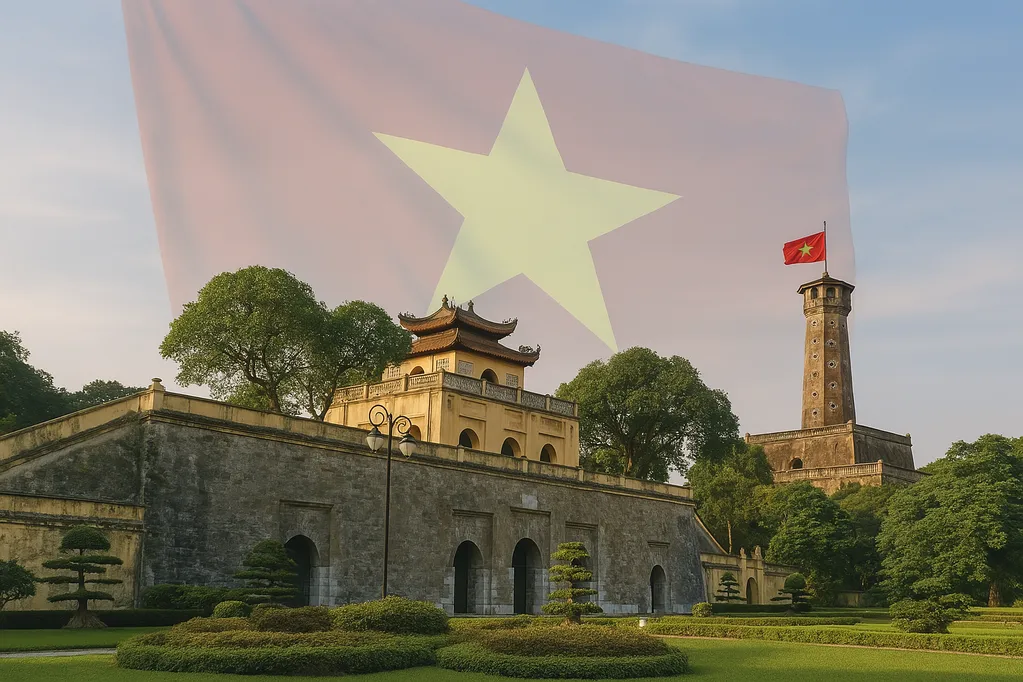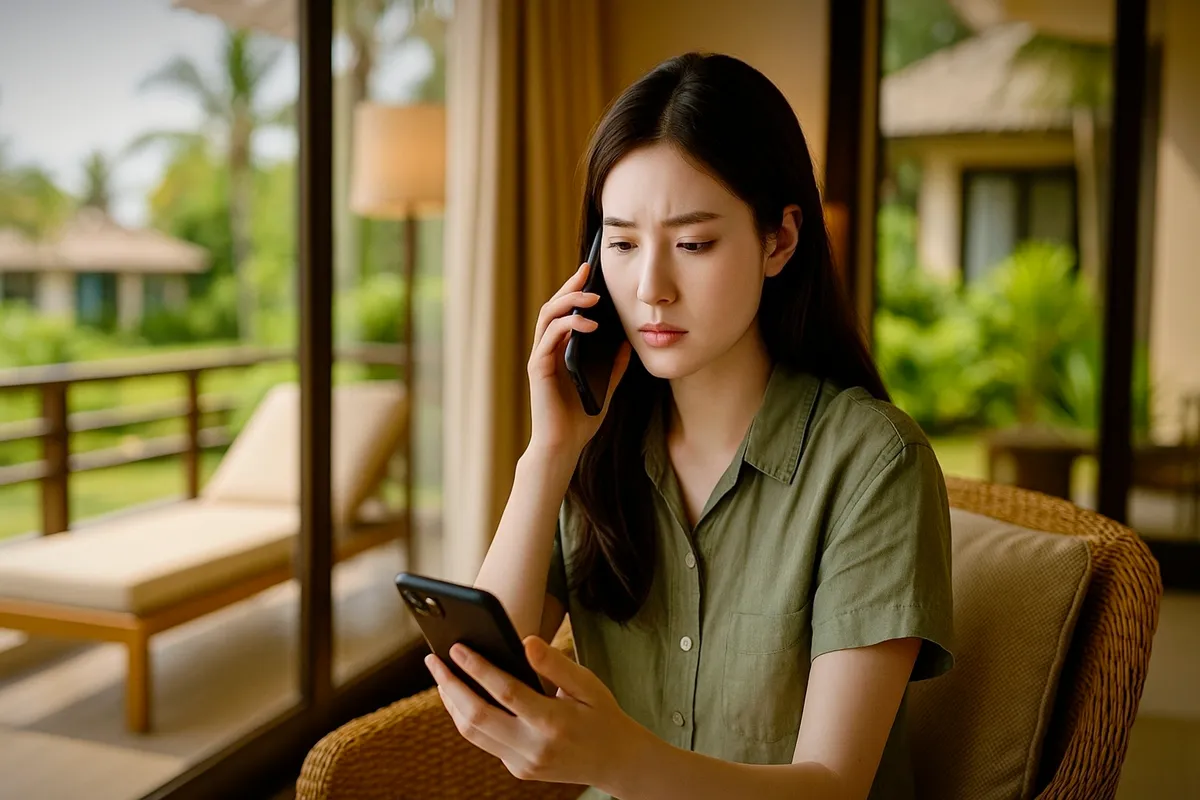Whispers of Time: A Journey into Hoang Thanh Thang Long
- Saturday, Apr 12, 2025, 03:43 (GMT+7)
Whispers of Time: A Journey into Hoang Thanh Thang Long
There’s a place in Hanoi where time does not move forward—it folds. It folds gently into layers, into footsteps, into breath. You won’t find its name in flashing lights, nor will it chase after your attention with artificial wonder. But if you let your heart lead your way, if you slow your steps for just a moment, you may find yourself standing before the gates of Hoang Thanh Thang Long—The Imperial Citadel of Thang Long. And from that moment, everything changes.
It begins quietly. You’re walking along Hoang Dieu Street, shaded by rows of ancient trees, the city’s pulse still echoing faintly behind you. Then you see it. Not towering or dramatic, but calm and dignified Doan Mon, the Southern Gate of the old citadel. Its yellowed walls, softened by centuries, do not demand your gaze. Instead, they invite it. And as you step inside, the modern world melts behind you like a dream waking up. In front of you stretches a space where emperors once ruled, where kingdoms rose and fell, and where history is not preserved in silence, but whispers.
This is not a museum. It’s not a reconstruction. It’s a living memory, carved into stone and soil. The citadel was first built more than a thousand years ago, during the time of Dai La, later becoming the capital under Ly Thai To when he moved the throne here in 1010. From the Ly to the Tran, from the Le to the Nguyen, and even during the war-torn 20th century, Thang Long remained the symbolic and strategic heart of the Vietnamese nation. It’s seen glories, betrayals, invasions, resistances—and yet, it endures.
The air here feels different. It’s not just the quiet or the green canopy overhead. It’s something deeper. I walked the ancient pathways laid with bricks worn thin by centuries of footsteps. In each one, I imagined traces left behind—perhaps from a royal procession, or a servant’s hurried walk in the early morning fog. The stones, the crumbling walls, the echoes—they are not broken remnants. They are storytellers. And if you are still enough, you will hear them speak.
I stood for a long while at Cot Co Ha Noi, the Hanoi Flag Tower, watching its aged body rise boldly into the sky. Covered in moss, weathered by time, it still stands as a proud symbol of resilience. Once a military observation point, now it is part of the city’s identity. But beyond its symbolic presence, what struck me most was how its stillness seemed to calm everything around it—as if even the wind knew to hush in its presence.
Then there’s Dien Kinh Thien, or what remains of it. Just a few stone steps, the footprint of what was once the grandest palace of the Vietnamese court. I sat at the edge of the stone platform, trying to picture what it must have looked like centuries ago—golden roofs gleaming under the sun, mandarins in ceremonial dress gathered below, and a king seated at the very center, holding the fate of a kingdom in his hands. The palace may be gone, but its soul lingers.
But perhaps the most unexpected turn of my journey came when I discovered Ham D67—an underground military bunker hidden within the grounds. It’s not visible from the surface; you could walk right past it without knowing. Yet down a narrow stairway lies one of the most hauntingly powerful places in Hanoi. It was here that key decisions were made during the war against America. Here, in a simple room with a wooden table and rotary phones, history pivoted. Walking through those cold, concrete corridors, I could almost hear the urgency in the voices of generals, feel the tension in the silence between decisions. It was the starkest contrast: above ground, imperial grandeur; below ground, revolutionary grit. And yet, it felt complete. Vietnam, after all, is a country that carries both its past and its struggle in one breath.
Outside again, I noticed how Thang Long refuses to be just one thing. It is not simply a site for history lovers. I saw students lounging in the shade, sketching quietly. A couple posed for engagement photos beneath an old banyan tree, sunlight turning the moss behind them into gold. A young woman sat cross-legged on the ground, reading a novel, headphones in, a soft smile on her face. Here, everyone seemed to be in their own kind of peace. Not performing, not rushing—just being.
And I think that’s what Hoang Thanh Thang Long gives people. A space not just to learn, but to feel. To reconnect. In a city as alive and complex as Hanoi, filled with noise and life and beauty and contradictions, this citadel is a rare heartbeat—a reminder that we are all part of something longer, larger, deeper.
If you ever plan to visit, my gentle suggestion: go in autumn. Hanoi’s autumn is like poetry—clear skies, soft breezes, golden leaves falling like whispers. Walk the grounds when the sun is low. Watch how the light turns everything tender. Listen to the quiet. Take your time.
But honestly, every season here has its own magic. In spring, the air smells of flowers and beginnings. In summer, the shadows stretch wide, and the heat slows time. In winter, there’s a sharpness in the air that makes the ancient stones feel even more profound. No matter when you come, come open-hearted. Come ready to listen.
A few practical notes: Entry is around 30,000 VND—about the cost of a cup of coffee. Students and children enjoy discounts. You won’t need much else. Maybe bring water, a hat, a camera if you must—but don’t spend your time trying to capture everything. Let some things remain yours alone.
Some people say, “You can’t understand a place until you know its past.” But Thang Long goes one step further. It doesn’t just show you the past—it allows you to step into it, to breathe it, to carry a piece of it with you when you leave.
I remember the moment I walked away. The sun was setting behind the gate. The shadows had grown long, and the golden walls glowed in that soft, dying light. I paused. Turned back. And for just a moment, it felt as if the citadel was watching me too—sending me off gently, like an old friend who knows we will meet again.
And I believe we will. Because there are places that visit you long after you’ve left them. And Hoang Thanh Thang Long, without a single word, told me everything I needed to hear.

 CHECKIN.VN
CHECKIN.VN








Share on